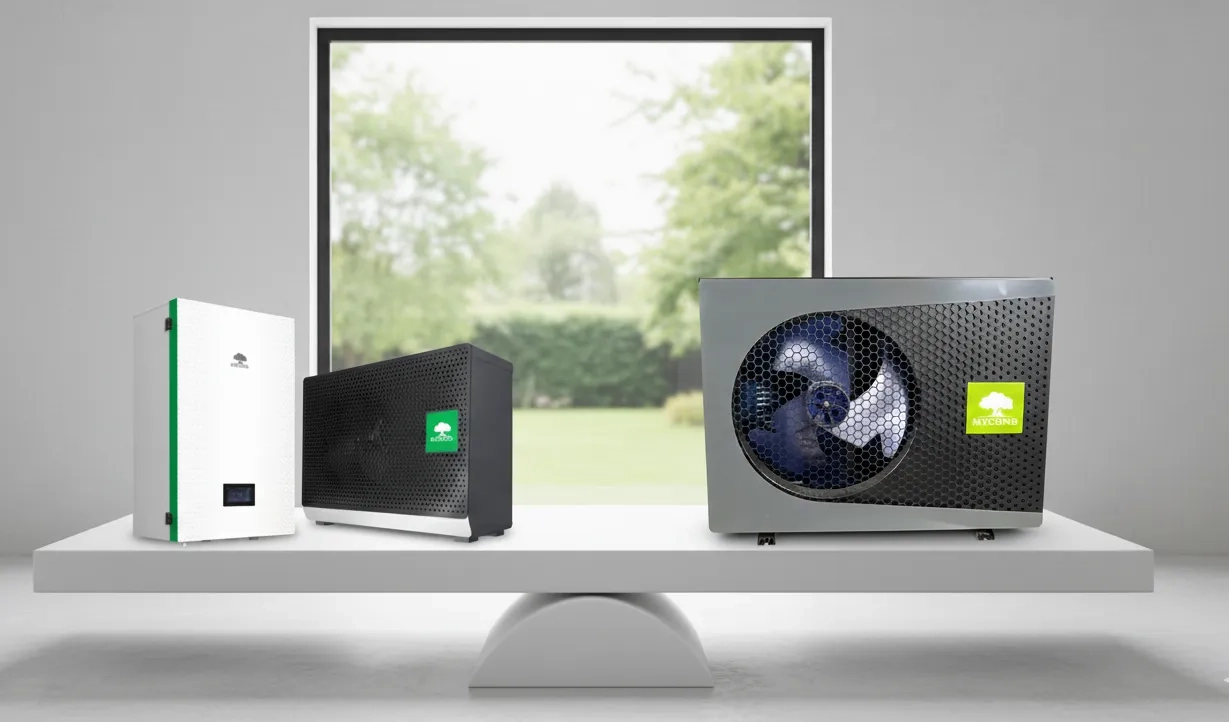
Choosing the type of air-to-water heat pump is one of the key stages in designing an energy-efficient heating system. Property owners often face a dilemma: monobloc or split system? This question arises not just about the construction, but also touches more fundamental aspects: the specifics of the building project (renovation or new build), technical constraints of the premises, regulatory requirements and personal priorities.
When selecting a heat pump, it is important to consider not only the unit’s output, but also how it will integrate into an existing or planned system. Understanding the fundamental difference between a monobloc and a split system will help you make the optimal decision, taking into account the individual characteristics of each project.
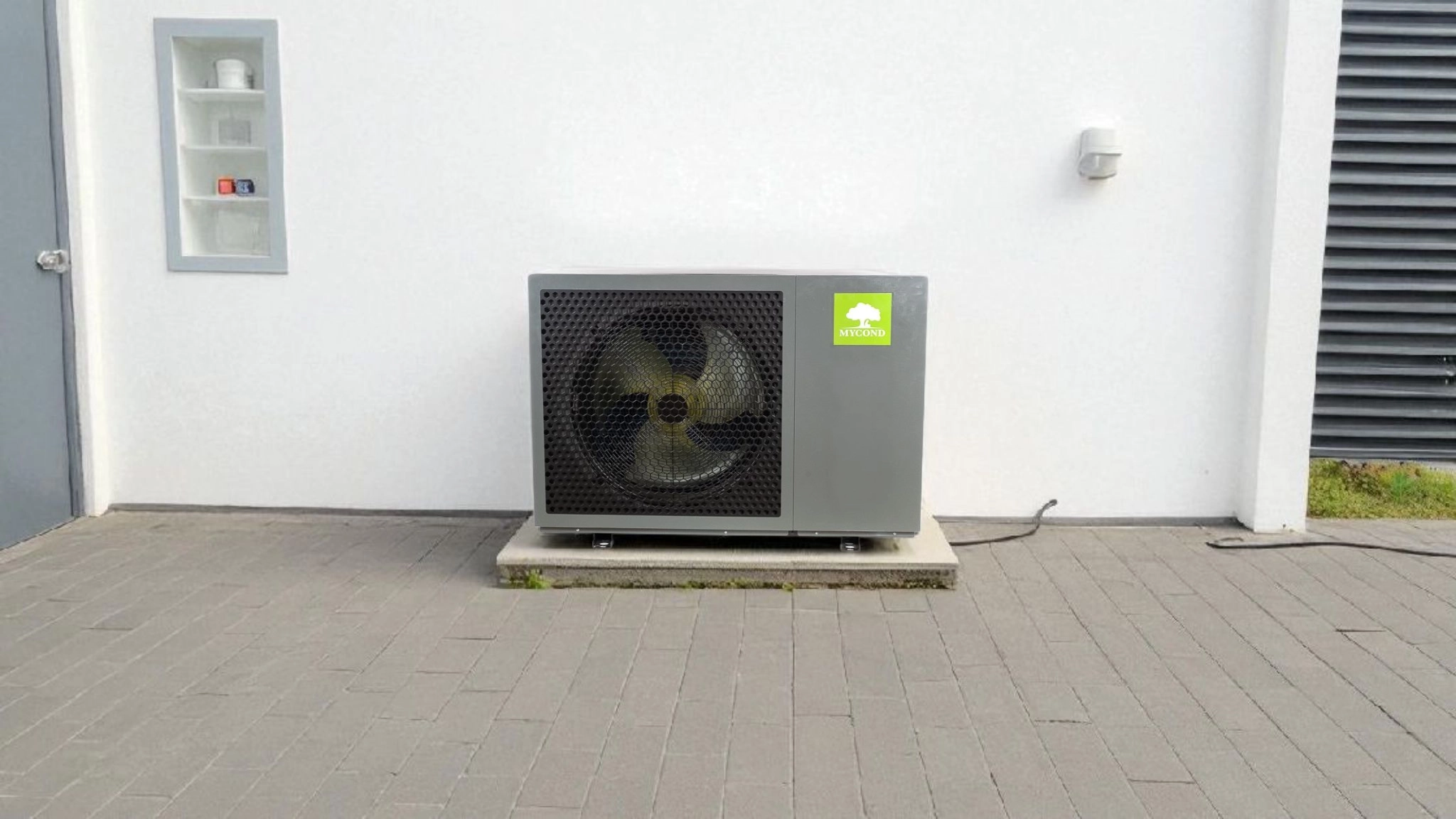
The fundamental difference between a monobloc and a split system
Monobloc heat pump — a system in which all components of the refrigeration circuit, including the condenser, evaporator and compressor, are housed in a single outdoor unit. Only water circulates between the house and the heat pump, transporting thermal energy to the heating system. Heat exchange takes place entirely in the outdoor unit, and heated water is supplied indoors.
Split-system heat pump — a divided configuration where the evaporator is located in the outdoor unit and the condenser and hydraulic system are indoors. A refrigerant line with refrigerant runs between the units, through which thermal energy is transferred. The indoor unit transfers heat from the refrigerant to the water in the heating system.
Comparing monobloc and split systems by key criteria
Installation and set-up
Monobloc heat pumps have a simpler installation process as there is no need to run a refrigerant line or evacuate the system. You only need to connect the water pipes to the heating system. Split systems require a qualified refrigeration engineer to run copper pipes, evacuate the system and top up the refrigerant.
Refrigerant inside the building
In a monobloc, all the refrigerant is contained exclusively in the outdoor unit, which can be critically important for sites with regulatory restrictions or for users concerned about safety. In split systems, the indoor unit contains the refrigerant and condenser, meaning part of the refrigerant circuit is inside the house. However, modern refrigerants such as R32 are certified and safe for use in residential premises.
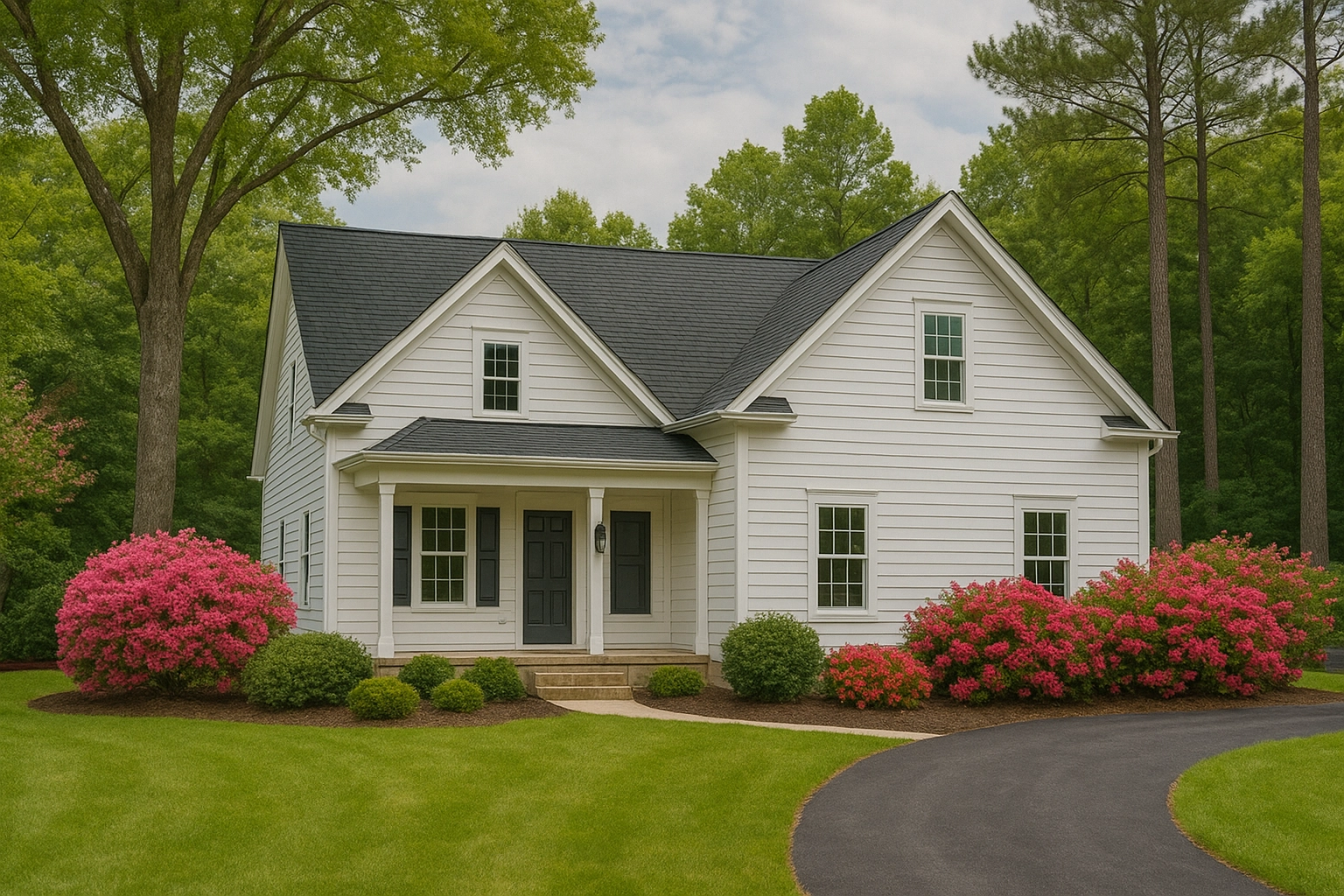
Distance limitations
Monoblocs allow the water line to be run over considerable distances without losing efficiency — only thermal losses occur, which are offset by quality insulation. For split systems, the length of the refrigerant line is usually limited to 15–25 metres (depending on the model), beyond which the system’s energy efficiency drops significantly.
Efficiency and heat losses
In monoblocs, minor heat losses can occur in the water line, especially if it is not adequately insulated. Split systems have minimal heat loss on the short refrigerant run, making them optimal when it is not possible to ensure high-quality insulation of the water circuit.
Noise level
A monobloc places the entire refrigeration circuit, including the compressor, outside, ensuring complete quiet inside the house. A split system has an indoor unit with a circulation pump, which can generate slight noise (35–45 dBA), although for most users it is barely noticeable.
Aesthetics and placement
With a monobloc, no equipment is installed indoors, saving space. A split system requires space for the indoor unit, which can be quite large, especially in versions with an integrated domestic hot water tank.
Maintenance and diagnostics
With a monobloc, all service work is carried out outdoors, which makes it easy to diagnose the compressor, heat exchangers and fans, but may be inconvenient in cold weather. In split systems, part of the diagnostics can be done via the indoor unit, simplifying checks of refrigerant pressure, condenser temperature and pump operation in winter.
Reliability and cost
A monobloc has fewer joints, reducing the number of potential refrigerant leak points. A split system contains more joints on the refrigerant line, which theoretically increases the risk of leakage in the event of poor installation. As for cost, a monobloc usually has cheaper installation, as it does not require a refrigeration engineer, unlike a split system, where installation is more expensive due to running the refrigerant line and evacuating the system.
Technical specifications of Mycond heat pumps
| Series | Type | Output A7/W35 (kW) | COP A7/W35 | COP A-7/W35 | Class W35/W55 | Max. flow temperature (°C) | Compressor | Refrigerant | Noise (dBA) |
|---|---|---|---|---|---|---|---|---|---|
| BeeEco | Monobloc | 6.3-18.5 | 4.8-4.9 | 3.5-3.6 | A+++/A+++ | 75 | Highly, rotary | R290 | 48-55 |
| BeeSmart | Split | 9.2-18.5 | 4.3-4.78 | 2.97-3.27 | A+++/A+++ | 55 | Mitsubishi | R32 | 44/52-44/61 |
| BeeHeat | Split | 6.0-16.2 | 4.41-4.89 | 2.6-3.1 | A+++/A+++ | 60 | Mitsubishi | R32 | 42/58-42/68 |
| BeeThermic | Monobloc | 6.5-24.0 | 4.3-4.9 | 3.2-3.7 | A+++/A+++ | 60 | Panasonic with EVI | R32 | 50-58 |
| MBasic | Monobloc | 7.2-11.9 | 4.0-4.3 | 2.6-2.9 | A+++/A+++ | 55 | Zhuhai Landa | R32 | 64-68 |
The BeeEco series uses R290 — a natural refrigerant with GWP=3, meaning a minimal impact on the climate. This refrigerant has limits on charge mass, so it is ideal for a monobloc, where the entire circuit is located outdoors.
The BeeSmart and BeeHeat split systems use R32 — a safe, certified refrigerant with low GWP and no restrictions for use in indoor units.
The BeeThermic monobloc is equipped with EVI (Enhanced Vapor Injection) technology and a Panasonic compressor, ensuring efficient operation at extremely low outdoor temperatures and high flow temperatures up to 60 degrees.
When to choose a monobloc, and when a split system?
A monobloc is optimal when:
- You are refurbishing an existing heating system where running refrigerant lines is difficult;
- The site has regulatory restrictions on refrigerant being present indoors;
- Your priority is the simplest possible installation;
- There is no space for an indoor unit;
- The distance from the installation site to the house exceeds 25 metres;
- Complete silence inside the house is critically important.
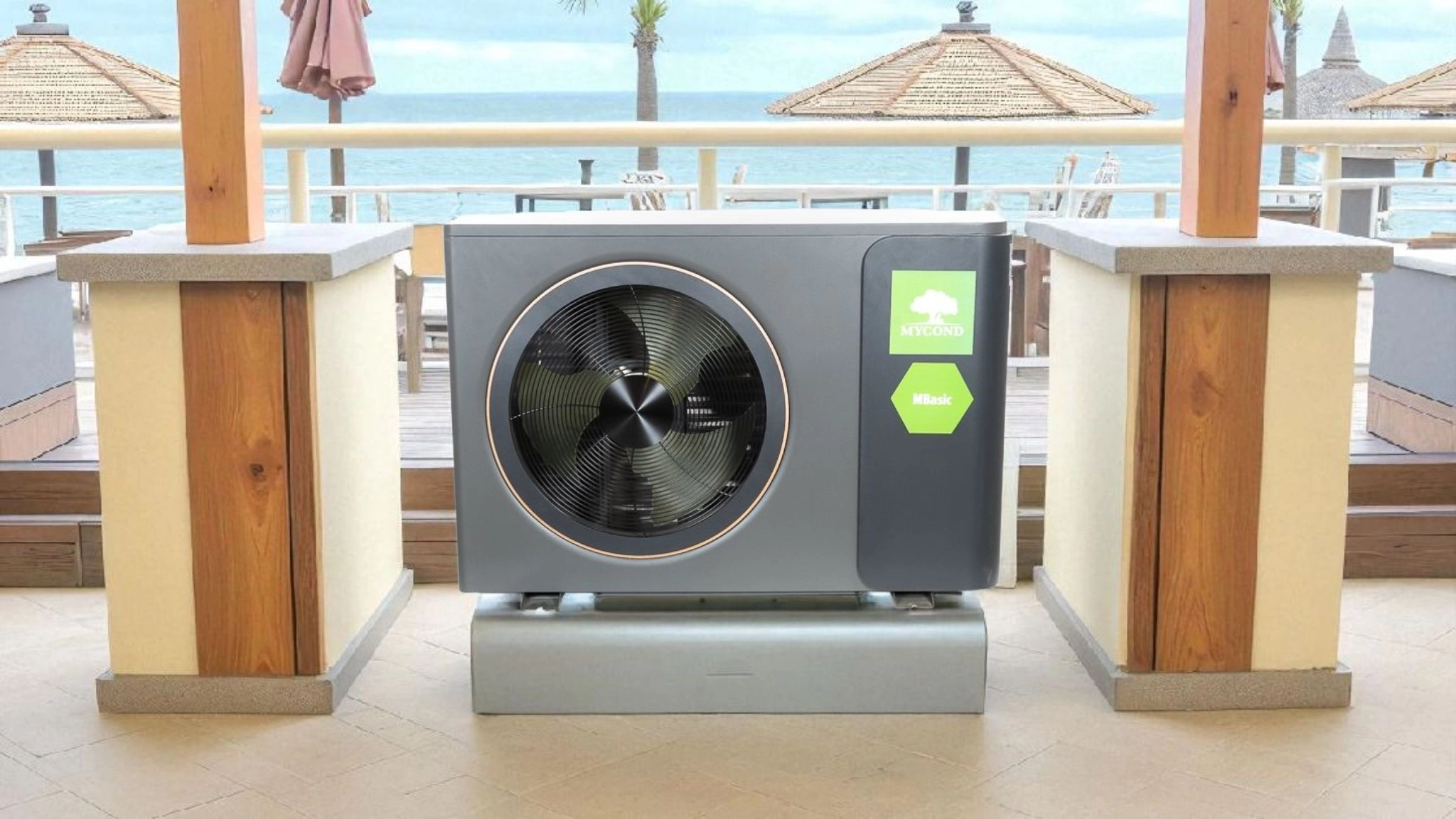
A split system is optimal when:
- It is a new build, where refrigerant lines can be embedded at the construction stage;
- The outdoor unit is located far away and the water line would be too long with high heat losses;
- You need an indoor unit with an integrated DHW tank (as in the BeeSmart DTS model with a 250-litre tank);
- There is an opportunity to place the indoor unit in a plant room/boiler room;
- Your priority is minimising heat losses on the line.
Installation and commissioning
Monobloc installation process
Installing a monobloc heat pump involves connecting the flow and return water pipes, filling the system with heat transfer fluid, checking for leaks, connecting the electrics and the controller. The whole process usually takes 1 day and can be done independently or with the help of a plumber, without involving a refrigeration specialist.
Split system installation process
Installing a split-system heat pump includes running copper pipes for the refrigerant line with insulation, evacuating the system, leak testing, topping up the refrigerant (if the run length exceeds the standard), connecting the condensate drain, connecting the indoor unit to the water circuit and the electrics. The process takes 2–3 days and requires a qualified refrigeration engineer.
It is important to note that poor-quality installation of a split system can lead to refrigerant leaks, reduced efficiency and even compressor failure.
Operation and servicing
When operating a monobloc, all service work is carried out outdoors, which makes it easy to diagnose the compressor, heat exchangers and fans without needing access indoors. In the case of a split system, part of the diagnostics can be performed via the indoor unit — it is convenient to check refrigerant pressure, condenser temperature and pump operation, and in winter it is more comfortable to work in a warm room.
Both Mycond monoblocs and split systems are equipped with modern controllers with self-diagnostics, error code display and remote access via a mobile app, which significantly simplifies monitoring and servicing.
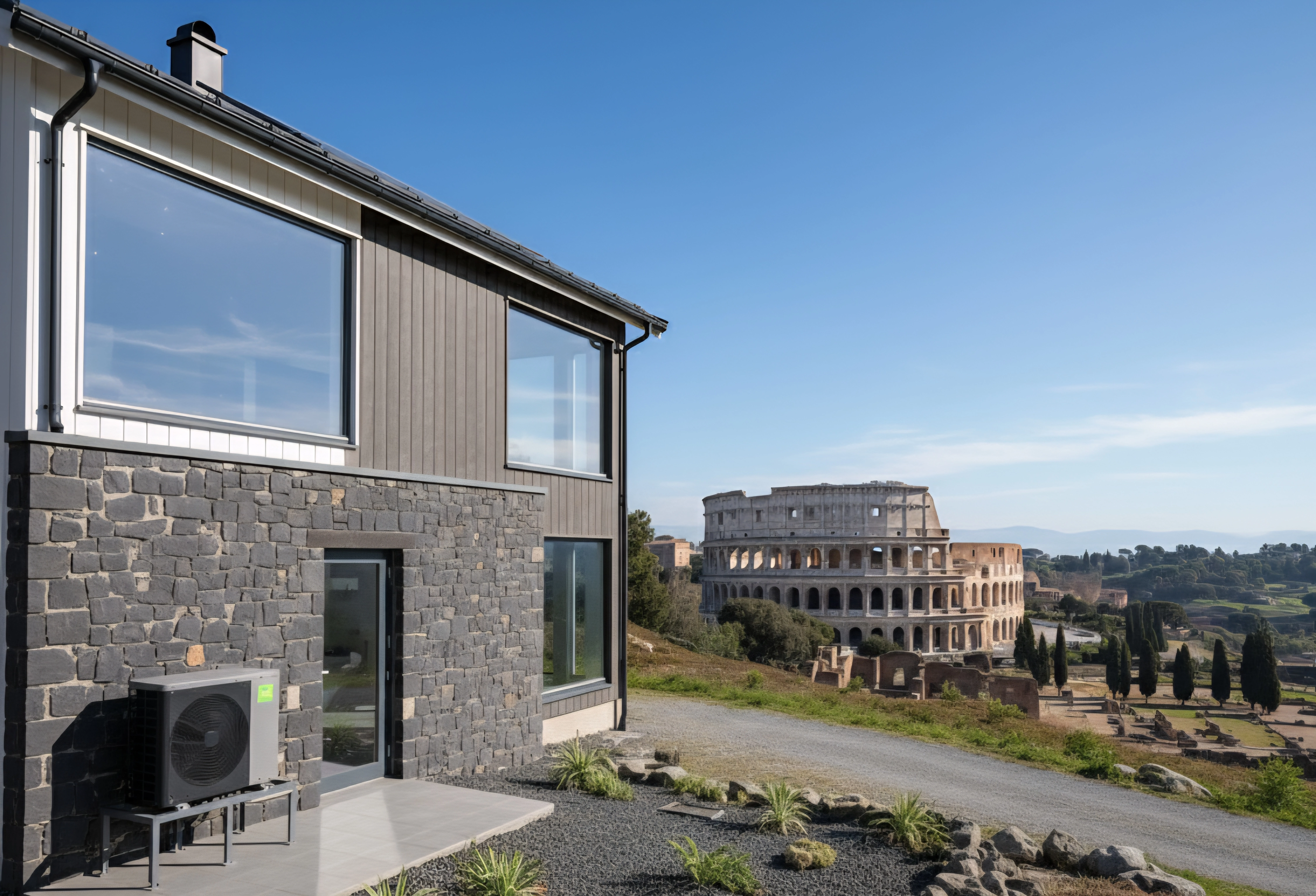
Common myths about monobloc vs split heat pumps
Myth 1: A monobloc is less efficient than a split
In reality, the coefficient of performance (COP) depends on the quality of the compressor, heat exchangers and inverter logic, not on the construction type. The data in the table above show that the BeeEco and BeeThermic monoblocs have COP values on a par with, or even higher than, the BeeSmart and BeeHeat split systems.
Myth 2: A split is always quieter
A monobloc places the entire noisy refrigeration circuit outdoors, making it completely silent inside the house. A split system has an indoor unit with a circulation pump that produces 35–45 dBA of noise, which, although minor, is still present.
Myth 3: A monobloc freezes in winter
Modern monoblocs, such as the Mycond BeeEco, are equipped with built-in frost protection, pan and drain heaters, ensuring efficient operation at temperatures down to -25 degrees.
Myth 4: Refrigerant in a split system is dangerous
Modern refrigerants R32 and R410A are certified to European standards and are safe for use in residential premises. They feature leak sensors and protection systems that minimise potential risks.
Frequently asked questions about monobloc and split heat pumps
Which is more reliable: monobloc or split?
A monobloc has fewer joints and, accordingly, fewer potential refrigerant leak points. A split system contains more joints on the refrigerant line, which theoretically increases the risk of leakage with poor installation. However, with professional installation, both types of systems demonstrate high reliability.
What is the maximum pipe run length for a split system?
Usually the refrigerant line length for a split system is limited to 15–25 metres, depending on the specific model. Exceeding this distance significantly reduces the heat pump’s efficiency.
Can I install a monobloc myself?
Theoretically yes, if you have sufficient plumbing and electrical skills. However, to maintain the warranty and ensure optimal efficiency, we recommend engaging certified specialists.
Does the construction type affect energy efficiency?
Energy efficiency (COP) mainly depends on component quality and technology, rather than the construction type. Both Mycond monoblocs and split systems show high COP figures in the 4.0–4.9 range at A7/W35.
Which refrigerants are used in monoblocs and split systems?
Monoblocs can use both R32 and the natural refrigerant R290 (propane). Split systems usually run on R32 or R410A. The choice of refrigerant depends on technological features and environmental requirements.
What should I choose for refurbishing an old heating system?
For refurbishing existing heating systems, monoblocs are more often chosen due to their simplicity of installation and the lack of need to run refrigerant lines in an already finished house.
Choose the optimal heat pump for your home
Not sure which type of heat pump is right for you? Mycond engineers will help you determine the optimal solution, taking into account your home’s characteristics, budget and the region’s climate. Every project is unique, and our experts will select a configuration that delivers maximum efficiency, comfort and reliability for your heating system.
Get in touch for a consultation to receive detailed information about Mycond heat pump models and their technical specifications, tailored to your needs. We will help you make an informed decision that will work efficiently for many years to come.